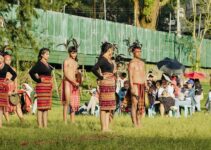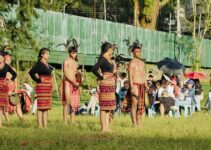As you navigate the complex landscape of Canadian resource extraction, the intertwining paths of indigenous land rights stand like ancient trees, deeply rooted and resilient. This journey delves into the historical context, legal frameworks, and challenges surrounding the intersection of indigenous communities and resource extraction in Canada. From the enduring impact on indigenous lands to the ongoing advocacy efforts, the terrain is fraught with complexities and controversies. As you delve into this intricate terrain, you will explore the nuances of indigenous resistance and the evolving future outlook for land rights in resource extraction.
Key Takeaways
- Colonial legacy and poorly understood treaties have marginalized Indigenous peoples and disregarded their land rights.
- Resource extraction has caused destruction of traditional lands, cultural practices, and the physical well-being of Indigenous communities.
- Landmark cases and treaty rights shape the legal framework for Indigenous land rights, but there is a need for meaningful consultation and consent processes.
- Indigenous resistance and advocacy efforts, including legal battles and cultural revitalization, play a crucial role in asserting rights and connections to the land.
Historical Context of Indigenous Land Rights
You must understand the complex historical context of Indigenous land rights in Canada to appreciate the current challenges faced in resource extraction. The colonial legacy has left a profound impact on Indigenous communities, shaping their relationship with the land. The treaties signed between Indigenous peoples and the Canadian government further complicate this landscape. These treaties, often poorly understood or ignored by the government, are central to Indigenous land rights. They were intended to ensure coexistence and cooperation between Indigenous nations and settlers, yet often failed to protect Indigenous land from exploitation and encroachment.
The colonial legacy established a foundation of inequality, with Indigenous peoples marginalized and their land rights disregarded. This historical backdrop continues to reverberate in present-day resource extraction, as Indigenous communities grapple with the legacy of colonialism and assert their treaty rights. The struggle for recognition and enforcement of these treaty rights is a fundamental aspect of the contemporary Indigenous land rights movement in Canada. Understanding this history is crucial in addressing the challenges and complexities that arise in resource extraction on Indigenous lands.
Impact of Resource Extraction on Indigenous Communities
How does resource extraction directly affect Indigenous communities and their land rights in Canada? Resource extraction has substantial impacts on Indigenous communities, often leading to challenges in maintaining cultural preservation and community resilience. The extraction process can result in the destruction of traditional lands, disrupting the cultural practices, and traditional knowledge systems that form the foundation of Indigenous communities. This disruption can have profound effects on community resilience, as it threatens the social and economic structures that have sustained these communities for generations. Additionally, resource extraction can lead to environmental degradation, further jeopardizing the cultural and physical well-being of Indigenous communities.
Furthermore, the extraction process can result in a loss of access to sacred sites and traditional territories, which are integral to the cultural identity and spiritual practices of Indigenous peoples. This loss can have devastating effects on the preservation of cultural heritage and intergenerational transmission of knowledge. Therefore, it is crucial to recognize and address the impact of resource extraction on Indigenous communities to ensure the protection of their land rights, cultural preservation, and community resilience.
Legal Framework for Indigenous Land Rights
The legal framework for Indigenous land rights in Canadian resource extraction is essential for understanding the complexities of Indigenous land tenure and resource governance. Landmark cases have played a crucial role in shaping the legal landscape surrounding Indigenous land rights. These cases have set important precedents and helped define the scope and nature of Indigenous land rights in Canada. They have also contributed to the recognition of treaty rights, which are fundamental to the relationship between Indigenous peoples and the Canadian government.
Treaty rights are an integral part of the legal framework for Indigenous land rights in Canadian resource extraction. These rights are enshrined in historic treaties between Indigenous nations and the Crown, and they continue to hold significant legal weight. Understanding and respecting these treaty rights is paramount when engaging in resource extraction on Indigenous lands. They form the basis for consultation and accommodation processes, ensuring that Indigenous communities have a voice in decisions that affect their lands and resources.
Challenges and Controversies in Resource Extraction
You'll need to address the challenges posed by Indigenous consent requirements and the controversies surrounding environmental impact concerns in Canadian resource extraction. These issues have sparked significant debate and tension between Indigenous communities, industry stakeholders, and the government. It's crucial to navigate these complexities with sensitivity and a deep understanding of the historical and cultural significance of Indigenous land rights.
Indigenous Consent Requirements
When navigating indigenous consent requirements in Canadian resource extraction, it's crucial to understand the complexities and challenges involved. Indigenous consultation is a key aspect of obtaining consent for resource extraction projects on indigenous lands. However, there are significant challenges and controversies surrounding this process. One of the main issues is the lack of clarity in government obligations regarding indigenous consent. The interpretation and implementation of the duty to consult and accommodate indigenous peoples often lead to misunderstandings and conflicts between indigenous communities, resource companies, and the government. This ambiguity creates a barrier to achieving genuine consent and collaboration in resource extraction activities. As a result, navigating indigenous consent requirements requires a deep understanding of the legal framework, cultural sensitivities, and historical context to address these challenges effectively.
Environmental Impact Concerns
To address environmental impact concerns in Canadian resource extraction, you should assess the potential effects of your operations on the surrounding ecosystem and indigenous lands. This involves ensuring compliance with environmental regulations and actively engaging in community consultation to understand and address local concerns. Biodiversity protection should be a key consideration, and measures for ecological restoration must be incorporated into your extraction plans. By prioritizing these aspects, you can minimize the adverse effects of resource extraction and demonstrate a commitment to sustainable practices. Here's a table to summarize the key aspects:
| Environmental Regulation | Community Consultation |
|---|---|
| Comply with laws and regulations for environmental protection | Engage with indigenous communities and local stakeholders |
| Implement monitoring and reporting mechanisms | Address concerns and incorporate feedback |
Indigenous Resistance and Advocacy Efforts
In navigating indigenous land rights in Canadian resource extraction, you must recognize the significant role of indigenous resistance and advocacy efforts. Indigenous sovereignty is at the heart of these efforts, as indigenous communities strive to protect and assert their rights to self-governance and control over their traditional lands. Grassroots activism plays a crucial role in amplifying indigenous voices and raising awareness about the injustices faced by indigenous peoples in resource extraction processes.
Indigenous resistance encompasses a wide range of strategies, from legal battles and direct actions to cultural revitalization efforts that affirm indigenous connections to the land. Advocacy efforts often involve collaboration with non-indigenous allies, as well as engagement with government and industry stakeholders to demand meaningful consultation and consent processes. These efforts seek to challenge the historical marginalization of indigenous perspectives in resource extraction decisions and push for more equitable and sustainable approaches that respect indigenous rights and priorities.
As you navigate the complex landscape of indigenous land rights in Canadian resource extraction, it's essential to recognize and support the ongoing resistance and advocacy efforts of indigenous communities, acknowledging their inherent rights and agency in shaping the future of their lands.
Future Outlook for Indigenous Land Rights in Resource Extraction
As you consider the future outlook for indigenous land rights in Canadian resource extraction, the imperative is to prioritize meaningful collaboration and proactive engagement with indigenous communities. The future holds the potential for significant advancements in indigenous land rights within the context of resource extraction. Economic opportunities for indigenous communities are increasingly becoming a focal point in the resource extraction landscape. By actively involving indigenous groups in the decision-making processes and ensuring fair compensation for the use of their lands, resource extraction projects can become catalysts for economic empowerment and growth within these communities. Furthermore, reconciliation efforts are essential for building trust and fostering mutually beneficial relationships between resource extraction companies and indigenous peoples. This involves acknowledging past injustices, actively working towards remedying them, and ensuring that indigenous voices are not only heard but also incorporated into the decision-making processes. As these efforts progress, a future where indigenous land rights are not only respected but also serve as a foundation for economic prosperity and reconciliation is within reach.
Frequently Asked Questions
How Do Traditional Indigenous Land Rights Differ From Modern Legal Frameworks for Land Ownership and Resource Extraction?
Traditional Indigenous land rights differ from modern legal frameworks for land ownership and resource extraction in that they are based on collective stewardship and spiritual connection to the land, while legal frameworks often prioritize individual property rights and economic development. Indigenous resistance strategies include legal challenges, direct actions, and community organizing to assert their rights and protect their lands from exploitation. This ongoing struggle reflects the clash between Indigenous values and dominant legal systems.
What Specific Strategies Have Indigenous Communities Used to Resist Resource Extraction on Their Land?
When facing resource extraction on their land, indigenous communities have employed various strategies to resist, including legal challenges and community resistance. These tactics involve asserting traditional land rights, engaging in legal battles, and mobilizing public support. By uniting and utilizing legal avenues, indigenous communities have effectively opposed resource extraction projects, highlighting the importance of solidarity and legal advocacy in protecting their land and rights.
How Have Indigenous Land Rights Been Affected by International Treaties and Agreements Related to Resource Extraction?
International treaties and agreements have significantly impacted indigenous land rights, undermining sovereignty and environmental stewardship. However, despite these challenges, indigenous communities have empowered themselves by integrating traditional knowledge, reclaiming their rights, and asserting their authority. This has led to a resurgence of indigenous sovereignty and a renewed focus on community empowerment. Despite the obstacles, indigenous peoples continue to fight for their rights and the protection of their land.
What Are Some Examples of Successful Advocacy Efforts by Indigenous Communities to Protect Their Land Rights in the Face of Resource Extraction?
When it comes to successful advocacy efforts by indigenous communities in protecting their land rights against resource extraction, there are inspiring examples. Indigenous groups have used legal challenges, direct action, and community mobilization to resist encroachments on their territories. These strategies have effectively raised awareness and garnered support, leading to positive outcomes. By standing firm in the face of environmental degradation and honoring their future vision, indigenous communities have made significant strides in safeguarding their rights.
How Do Indigenous Communities Envision the Future of Their Land Rights in the Context of Increasing Resource Extraction and Environmental Degradation?
In envisioning the future of their land rights, Indigenous communities prioritize resilience and environmental stewardship. They advocate for sustainable resource extraction practices, ensuring that their traditional lands are protected and respected. Through collaboration and empowerment, they seek to assert their sovereignty and preserve their cultural and ecological heritage. This vision emphasizes the importance of balance and harmony between development and conservation, reflecting a deep commitment to safeguarding the environment for generations to come.
Conclusion
You've learned about the complexities of indigenous land rights in Canadian resource extraction. Did you know that despite making up only 4.9% of the Canadian population, indigenous peoples are disproportionately affected by resource extraction, with 33% of global mining investments taking place on their lands? This statistic highlights the urgent need to address the impact of resource extraction on indigenous communities and their land rights.



